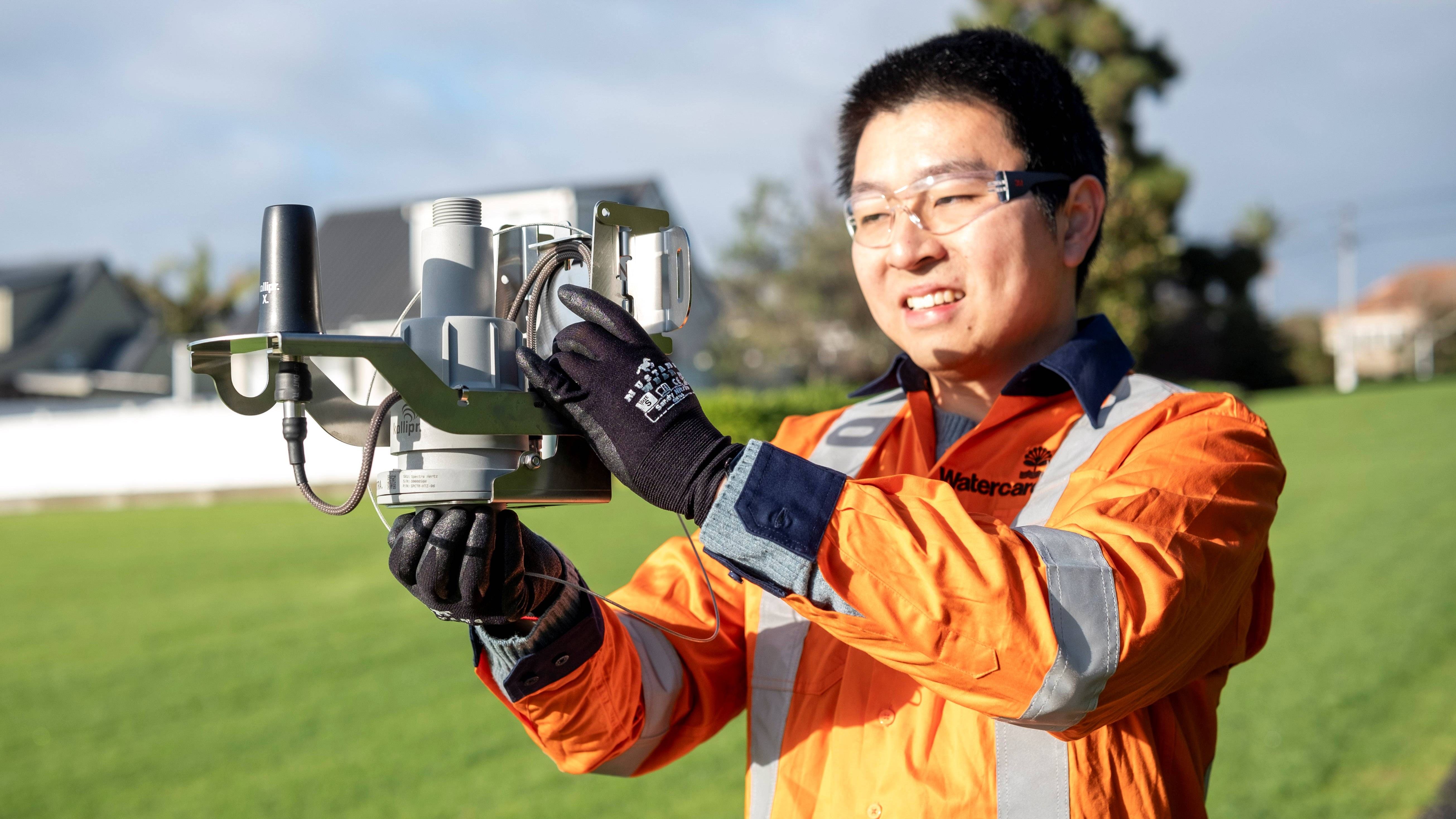
Watercare’s wastewater network smartens up with rollout of 5000 sensors
18 August 2025Watercare is rolling out 5000 smart sensors across Auckland’s wastewater network, giving it real time insights into what’s happening in the pipes beneath our feet for the first time.
The sensors are part of a $12 million Smart Network Programme, which focuses on integrating digital technologies and artificial intelligence software with Watercare’s infrastructure.
Watercare is working with Citycare Water to install the smart sensors.
Watercare smart systems manager Dave Moore says this investment will enable the organisation to collect more real-time data, identify problems and optimise the network to better protect the environment.
“Installing these 5000 sensors across Auckland over the next 12 months will allow us to be more proactive in addressing issues in our network before they escalate into overflows.
“We’re going to have far more data than a human can analyse, so we’re also investing in an AI analytics system that will analyse data from the sensors and our other monitoring systems, as well as things like weather, tide data and groundwater data. It will learn how our system behaves and tell us when something changes.
“We’ll be alerted to areas where stormwater and groundwater enter our system, tidal ingress, blockages developing and the performance of our pumping stations and wastewater network.
“These data driven insights will allow us to become more proactive rather than reactive when looking after our extensive wastewater network. We'll be able to make more informed decisions about where we need to invest in maintenance and renewals.”
Moore says before committing to the sensor rollout, Watercare undertook a one-year trial to evaluate the technology.
“The trial saw us install 135 sensors in pockets of the city prone to overflows.
“The trial was a success as it provided valuable insights that helped us better monitor the wastewater performance and identify blockages, as well as stormwater or groundwater ingress.
“For example, in Ellerslie, we identified and addressed sediment issues in the Onehunga Branch Sewer, which improved the overall performance of the network.”
Watercare smart network engineer Kevin Ang, who is heading the sensor rollout, says crews are aiming to install 400 to 500 sensors a month.
“Each of the sensors is installed inside a manhole and comes with its own data logger.
“These loggers transmit data to a central monitoring system, allowing us to receive real time information on what’s happening in the network.
“The sensors track sewer levels and can detect irregularities in the network – such as a sudden rise in sewer levels which may indicate a blockage or stormwater inflow infiltration happening close by.”
Ang says Watercare aims to have all 5000 sensors across Auckland’s 9000km wastewater network by the end of June next year.
“The sensors are state of the art and highly reliable. They’re built to endure extreme weather conditions, and each one takes about an hour to install.
“Having these sensors installed across the city’s integrated wastewater network will give us more accurate insights into what’s going on and what we can do to improve the performance of the city’s wastewater network.”